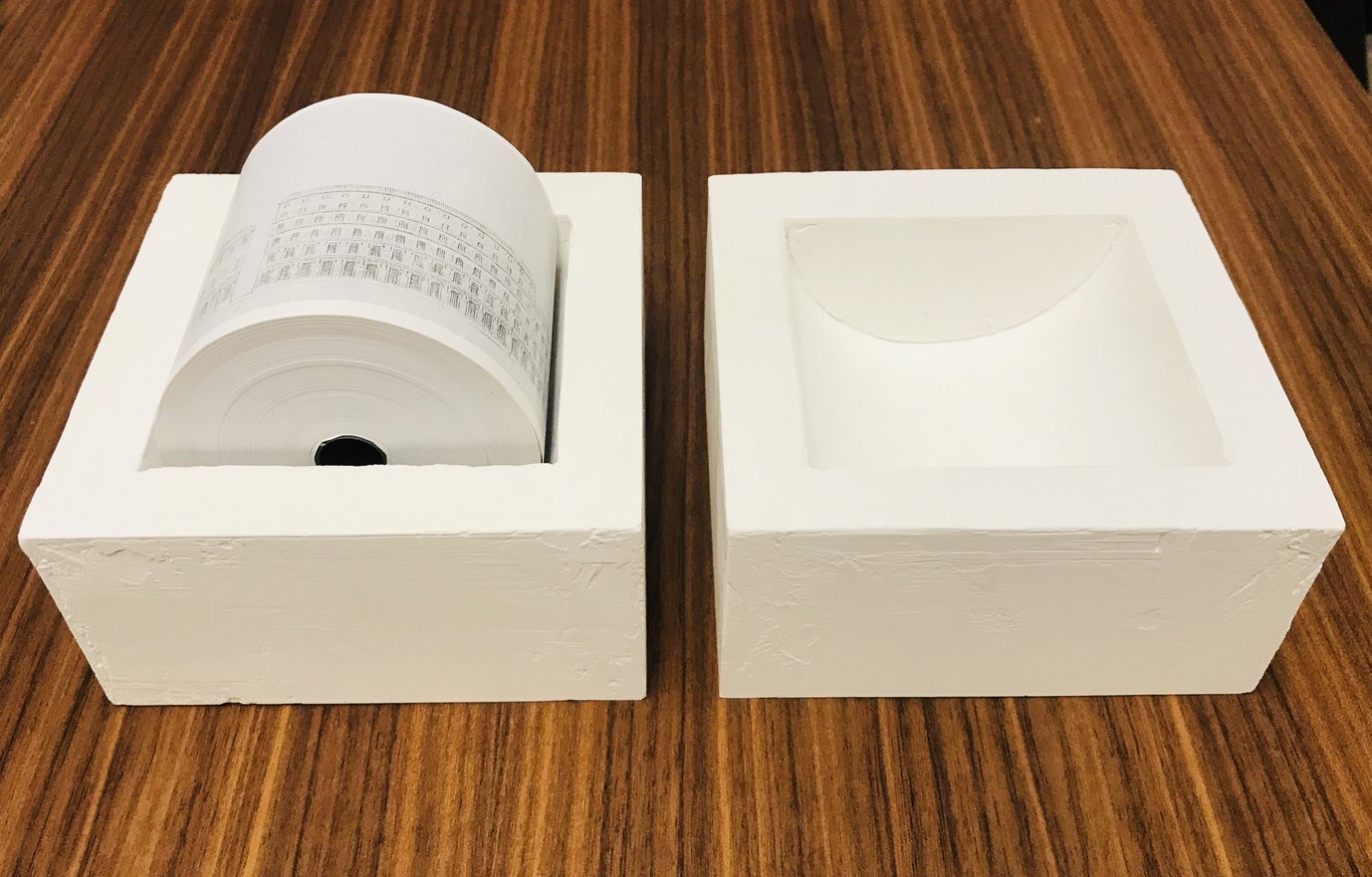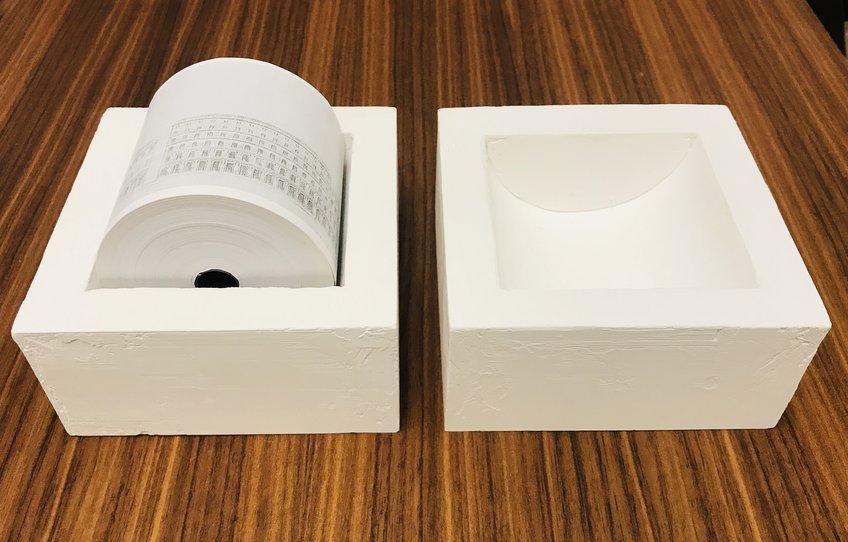Artist book Pareidolia added to the collection of the Bibliotheca Hertziana
When physical meets digital: Maria Bremer, Tristan Weddigen and Golo Maurer convene with Julia Draganović, Director of the Accademia Tedesca di Roma Villa Massimo, to present the artist book Pareidolia, specially designed by Sebastian Felix Ernst and Christian Losert for our collections.

Pareidolia by Sebastian Felix Ernst and Christian Losert
© Bibliotheca Hertziana
The handmade porcelain cast holds a thermal paper roll featuring imaginary cityscapes, drawn by an artificial intelligence trained on the historic volume Vie, piazze e monumenti di Roma (1835). An ephemeral process – the October 2020 research exhibition held at the Bibliotheca Hertziana in collaboration with Villa Massimo – is consolidated into a singular object.
Architect Sebastian Felix Ernst (Villa Massimo Fellow 2019–2020) and media artist Christian Losert developed Pareidolia, a research-based exhibition that critically engages with the legacy of renaissance proportions in architecture. A corpus of architectural drawings featured in Giacomo Antonelli’s volume Vie, piazze e monumenti di Roma (1835), digitized by the Bibliotheca Hertziana, was turned into a dataset for a “self-learning” neural network designed by Ernst and Losert. After a training process on the Hertziana's rare book collection, their software generated drawings translated from algorithmically derived cityscapes. Besides transposing the nineteenth-century visual input into a computational output, Ernst and Losert’s network iteratively produced new rules for its progressive calculations. It thereby accentuates and re-invents, in dream-like visualizations, canonical design elements, relationships and proportions. Machinic pareidolia—the flickering projection of learned patterns—has been employed to test out the potential for variance contained in the scripts of a long influential architectural style, as they undergo contingent, individual interpretation.
Pareidolia seeks to draw attention, more broadly, to the potentials and limitations of the use of artificial intelligence in artistic and architectural practice. What type of expertise does the inventive potency of algorithmic writing presume, and how do its pragmatics and aesthetics generate new knowledge in turn? What meaningful ways of engagement with the past can a combined human and machinic authorship perform, as it re-activates archival materials without losing sight of ever-recurring historical, social, and technical biases?
Sebastian Felix Ernst is a Berlin-based architect and lecturer. His projects blur the boundaries of aesthetic, architectural, and academic research. He has executed full-scale building projects as well as commissioned installations and exhibition displays. Currently he teaches a design studio at Dessau International Architecture Graduate School and is involved in multiple interdisciplinary projects with his practice ERNST-office for architecture. In 2019 he was a fellow at Villa Massimo in Rome.
Christian Losert is a Berlin-based artist, lecturer, and creative technologist in the field of media arts. He works at the intersection of art, design, and contemporary technology. His current practice focuses on self-unfolding installations controlled via computational methods. In his recent works, he incorporates custom-built artificial neural networks as a leading motive of his compositorial contributions.
